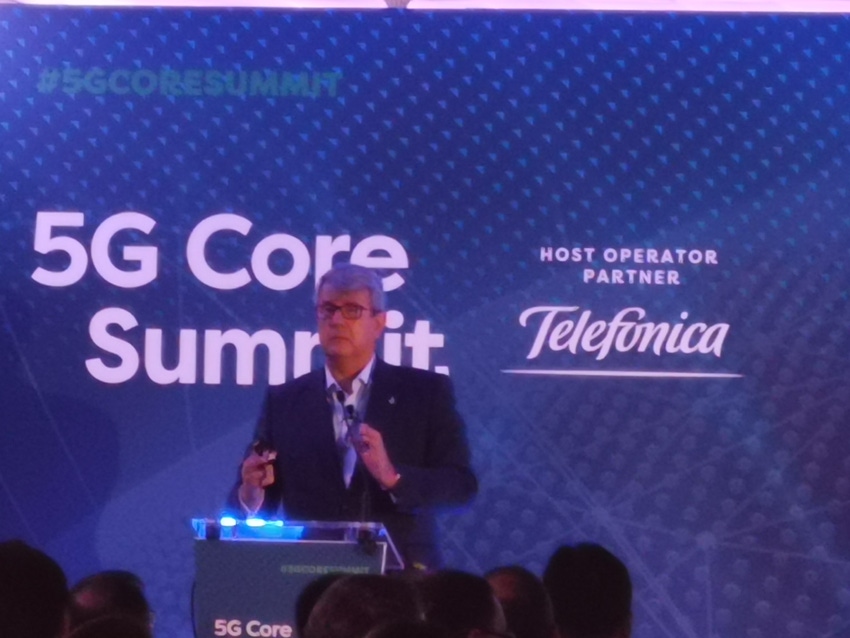If you consider 5G is not 5G without a 5G core, why have we not been talking about the 5G core more when 5G is being deployed and the 5G economy is just around the corner.
September 24, 2019

If you consider 5G is not 5G without a 5G core, why have we not been talking about the 5G core more when 5G is being deployed and the 5G economy is just around the corner.
If you hadn’t figured it out, this article might be about completing the 5G puzzle.
In Madrid, telco executives are gathering to talk about a topic which has not grabbed many headlines to date. The evolution, or perhaps revolution, of the core. And whilst it might be a very complicated project, one thing is very clear; the 5G core will not look very similar to the 4G core.
“We are not building infrastructure for the customer,” Telefonica CTIO Enrique Blanco said at the 5G Core conference.
“We are building it for society. How can we build a network which will not fail? 5G Core is a key topic for us.”
There are two interesting elements to this statement from Blanco. Firstly, the network is fundamentally different in its application. And secondly, if connectivity is going to central to society moving forward, failures cannot be tolerated, irrelevant of severity, location or impact.
Starting with the application of the network, while 4G was built for the mass market and appeasement of the increasingly digitally-native consumers, 5G is much more than that. Increased download speeds are an added bonus, but the value of 5G is realised through the creation of new services and engagement with enterprise.
Walter Wang of Huawei illustrated this nuance very well. The 4G network has been built for a single purpose, however the 5G core needs to be built in a way which allows for the creation of customisable connectivity services for enterprise. For example, a customer in the energy sector will be demanding low-latency. In manufacturing, reliability and resilience are key. And for broadcasting, its speed and availability.
The ‘one-size-fits-all’ 4G network cannot deliver on these demands. If 5G is to offer an opportunity to engage enterprise customers, the 5G core needs to be created in a way which allows for the creation of these services. It’s multi-layered, regionalised and distributed and multi-vendor. Which leads us very nicely onto the next area.
The 5G network cannot fail. The same could be said of the 4G network, however the impact is very different. If 4G networks go down, the general public can’t watch cat videos on the bus. If a 5G network fails, enterprise customers are irked and SLAs (service level agreement) come back to haunt the telco. Critical services fail and there is a very real impact to society.
As Blanco highlighted, operating through multiple layers, distributing the core over several regions and engaging with multiple vendors adds resilience. If there is a failure at one point in the network or ecosystem, it is a case of damage limitation not everyone to panic stations.
This is a perfectly reasonable approach to business, though there are certainly some risks to bear in mind.
A multi-vendor environment is all well and good for resilience, reliability, competition and innovation, however as Veon CTO Yogesh points out, the more variables in the ecosystem, the points of failure. Franz Seiser of Deutsche Telekom also echoed this point; the future network is impossible without automation and automation is very difficult.
This is the challenge with the 5G network of tomorrow; if it is multi-vendor, with telcos selecting components which have been deemed best-in-breed, this is not necessarily a guarantee they will complement each other. The ingredients might be perfect, but if the recipe doesn’t work, neither will the network. In some case, it might be worth sacrificing some quality because the components complement each other.
What is worth noting is that all of these discussions are very much in the early days. The 3GPP Release 16, due in the early part of 2020, will pay more specific attention to the 5G core, and at this point we might see work accelerate.
That said, always bear in mind that 5G is not really 5G until the core is 5G. And the nuances of delivering a 5G core are a lot more complicated than 4G.
About the Author(s)
You May Also Like








.png?width=300&auto=webp&quality=80&disable=upscale)


_1.jpg?width=300&auto=webp&quality=80&disable=upscale)


.png?width=800&auto=webp&quality=80&disable=upscale)